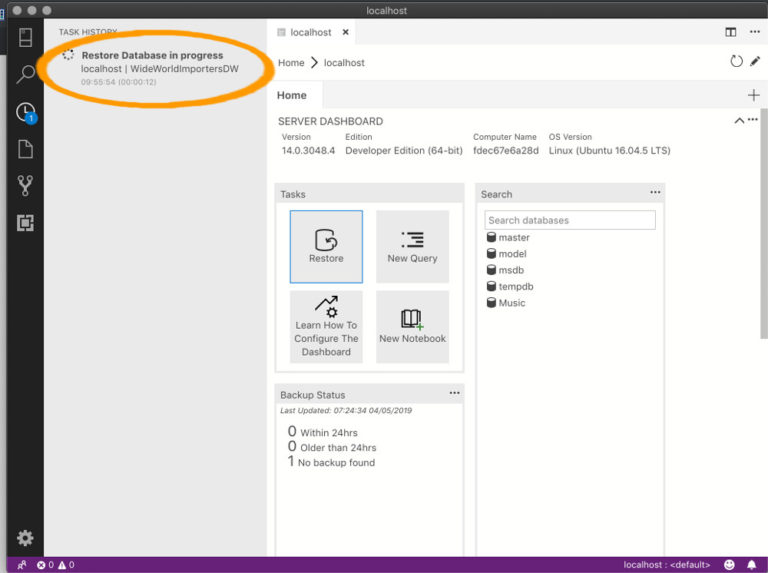

Following the last article, this article dives in connecting and thus creating tables, working with queries and deleting the data in SQL Server from Azure Data Studio.
#Azure data studio mysql how to
Once again, the best solution to load data to MySQL Database Service is MySQL Shell.In this Azure Data Studio Series article, we’ve learned about the basics of Azure Data Studio and how to install it, went through a step-by-step guide to connect Azure Data Studio to Azure SQL Database, learnt to connect and query to Azure SQL Database. Like this: Terminal with alternative file import statement from the above visual Object Storage and prefer the use of the GUI to generate the CSV files, you can import them Repeat the same operation for each table you want to load into MySQL Database Service. We can see that the data is now present in MySQL: Shell with database table displayed The private key’s location and filename: OCI configuration file previewĪfter that, you’re ready to import each table using MySQL Shell: Import MySQL Shell table statements

#Azure data studio mysql download
You’ll need to download the keys if you generate them, and then copy the content of the We start by creating the database and the tables if this is not yet done: Command line to create database tablesĭon’t forget that if you need an OCI config file on the compute instance, you can create itįrom the OCI Dashboard for your user (Identity -> User -> User Details): OCI dashboard with callout highlighting the 'Add API Keys' button
#Azure data studio mysql code
Shell directly without using Object Storage: VS Code with SQL command to import CSV tables Importing DataĪs usual, we will use MySQL Shell to import in MDS the data that has been generated from MS You can, of course, also use the GUI to export to CSV and import those CVS files using MySQL We do the exact same process for all the tables we want to import to MySQL Database Service. We can directly see it in OCI’s Dashboard too: categories.csv now in the OCI dashboard 1 root root 147 Aug 24 21:28 categories.csv $ sqlcmd -S localhost -U SA -P 'Passw0rd!' -d BikeStores \ > -Q "set nocount on select * from production.categories" \ > -o /mnt/ocifs/categories.csv -h-1 -s "," -w 700 -W $ ls -lh /mnt/ocifs/ We will use a store procedure to get the info we are looking for: sp_GetDDL. Unfortunately, in SQL Server, SHOW CREATE TABLE does not exist. Using sqlcmdįor those not willing to use a GUI, it’s also possible to get the table’s definition using the command line. We have then two remaining options for Linux users like me:įrom Azure Data Studio, you can get the table definition using Script as Create: Azure Data Studio screenshot with dropdown including the script as create optionĪnd then we get the selected table’s creation statement: VS Code open with a SQL file containing the table creation statementĪs in the previous post (mentioned at the beginning of this article), some minor changes will be required for MySQL. It’s easy to get the table definition using SSMS (SQL Server Management Studio), but it’s only available on Windows. In MySQL, “databases” and “table_schemas” are synonymous.Īs all table names are unique, we will just ignore the table_schema names in MySQL and only use the database’s name: BikeStores. One big difference between SQL Server and MySQL is that in SQL Server there is a notion of database and table_schemas. tables 2 > go TABLE_SCHEMA table_name - production categories production brands production products sales customers sales stores sales staffs sales orders sales order_items production stocks ( 9 rows affected ) 1 > : setvar SQLCMDMAXVARTYPEWIDTH 30 2 > : setvar SQLCMDMAXFIXEDTYPEWIDTH 30 3 > go 1 > select TABLE_SCHEMA, table_name from information_schema.


 0 kommentar(er)
0 kommentar(er)
